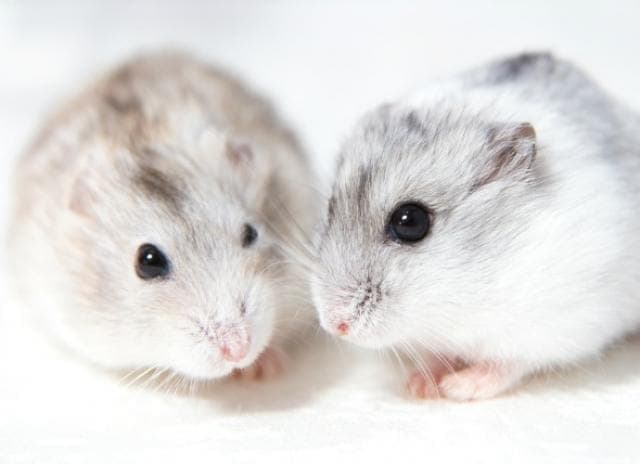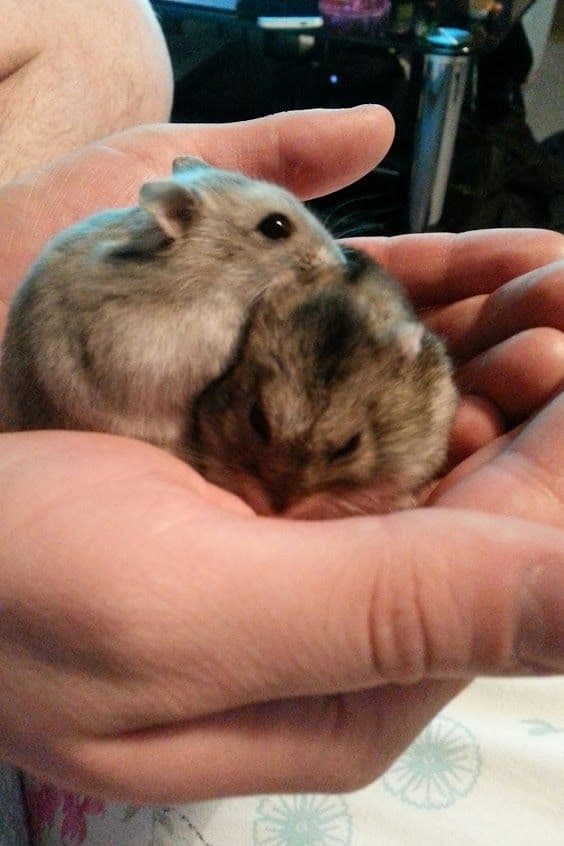Breeding your hamster is not a decision to make without careful consideration, and you absolutely must know what you will do with any babies that result. Most pet stores have established suppliers already, and there is no shortage of available hamsters. You should also consider the temperament and health of the hamsters you are breeding.
So how do you breed Campbell and Dwarf Winter White Russian Hamsters? If you’re a first-time hamster pawrent, you must have been wondering about breeding your hamsters. Let us assist you in preparing with all of the necessary information! We also encourage you to find out more outside of this article.
How To Tell if Your Hamster is Pregnant?
You can tell that a hamster is pregnant if it appears to have gained weight. A noticeable bulge in her abdomen just over her hips can be seen days before the delivery. In addition, your female hamster may act restless and agitated. It hoards more food than usual and begins to add more bedding materials to the nest. Next, it can be a bit tricky not knowing when the mating took place. Before you know it, the pups are on their way and you are totally unprepared.
Preparing for the Birth
Often the mother-to-be will provide few physical signs that she is pregnant.
Caring for a baby hamster should begin with caring for the mother while she is pregnant. Throughout the pregnancy and until the babies are weaned, a pregnant hamster requires plenty of clean water and a high-quality meals. For that reason, increasing the protein and fat intake by serving hard-boiled eggs, boiled chicken, and cereal, among other foods.
Then, be certain that their shelter is clean and ready to live in. If you think you can get close to its home before giving birth, do the following:
- Clean the cage and provide lots of fresh nesting material like strips of toilet paper or facial tissues.
- Take out the wheel and other toys from the cage to prevent injury to pups
- Keep the temperature constant at around 18-24 degrees Celsius
Now, relax and avoid disturbing its home or handling the mother hamster unnecessarily.
Age of Sexual Maturity
Dwarf Russian hamsters may reach sexual maturity as early as 4 to 5 weeks of age. However, females should not be bred for the first time until they are 3 to 4 months old. Males, on the other hand, can end up being bred by the time they are 3 or 4 weeks old. That is one important reason to separate your new arrivals by gender as soon as they’re weaned, usually when the pups are 18 to 21 days old.
Estrus Cycle
Female hamsters come into estrus, or heat, every four days or so. This is the time they will be fertile and receptive to a male. Within 24 hours of giving birth, a female can become pregnant again.
Length of Pregnancy
The gestation period of dwarf Russian hamsters is 18 days, although this can vary depending on the breed of your hamster. It’s hard to be specific unless you actually see the hamsters in the act. even the most friendly and well-trained dwarf Russian hamsters can get a bit testy when they’re ready to nest. She might be a bit wider at the sides of her stomach and her back, but you might not even notice.2 More likely, you will see her behavioral changes: drinking more water, hoarding food, and doing a bit of rearranging to her cage.
If you’re sure your dwarf Russian hamster is pregnant, you want to give her cage a good cleaning a day or two before her due date. That’s because you don’t want to disturb the mother and her pups for at least the first week of their lives. A new mother hamster is likely to kill or eat her young if she detects a different scent on the babies.
The New Litter
Litter size is quite variable, but typically there are around six pups per litter, although larger litters have been reported. The pups are born hairless and blind. They should have all their fur within two weeks, but won’t open their eyes until they’re almost prepared to be on their own.
If you are planning on breeding your hamster, check out The Ultimate Hamster Breeds Guide.
By Hamster Care Tips






0 Comments